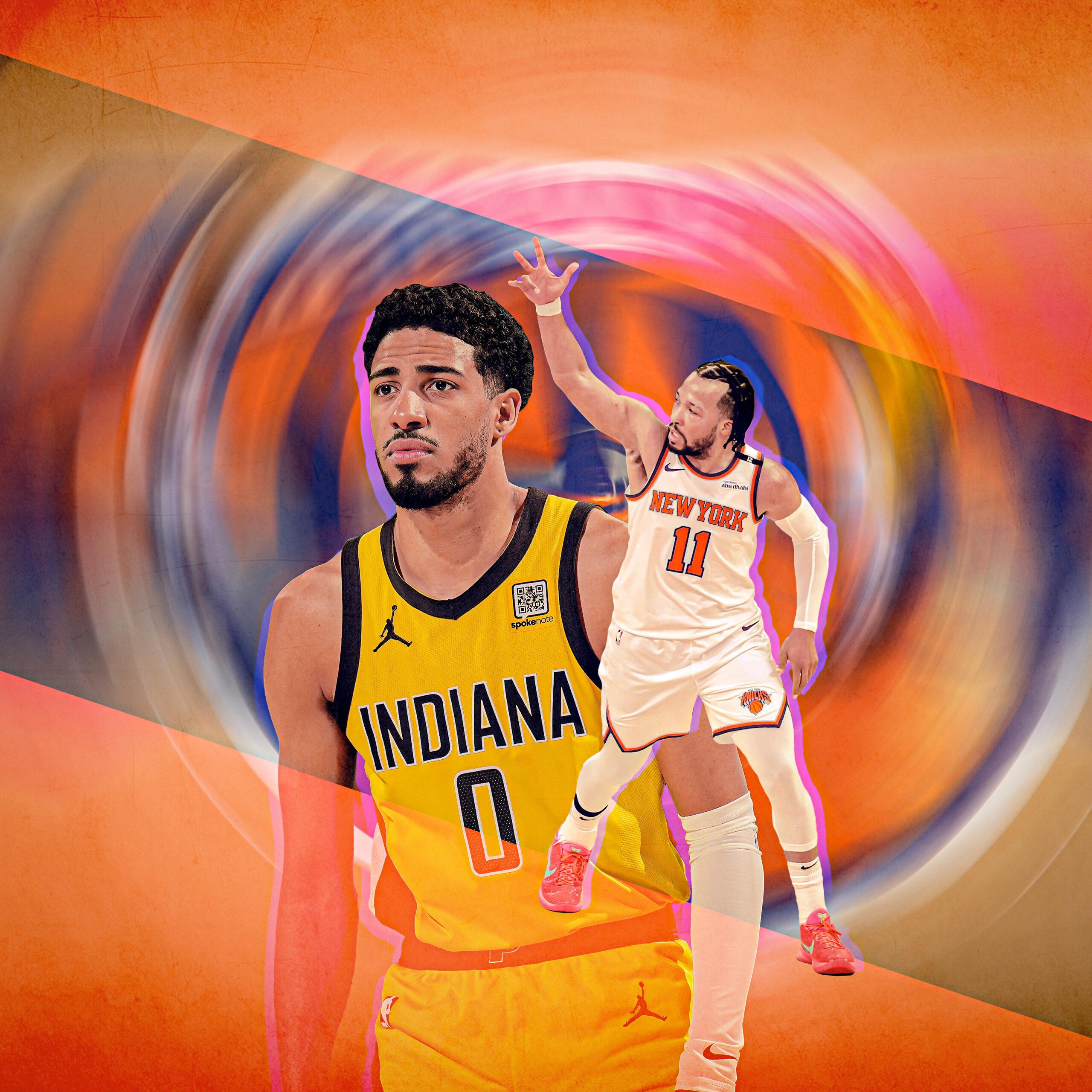
After a comfortable win in an elimination game Thursday night, the New York Knicks will officially live to fight another day. They’re still down 3-2 in the Eastern Conference finals, but they’ve now outscored the Indiana Pacers, in the aggregate, by a combined six points in five mostly competitive games, suggesting that this series could very easily go the distance.
The Pacers should feel pretty great about having two bites at the apple remaining. But after everything that occurred in Game 1, the Knicks have a right to believe they can overcome daunting odds in this matchup, where they have at least one sustainable advantage.
Pulling off the comeback and winning the series won’t be easy, of course. New York cruised to a 111-94 victory in Game 5, but the Pacers also shot only 33.3 percent from 3, scored just six points from the midrange, and, somehow, finished 13-for-23 at the rim. After he looked invincible in Game 4, the Pacers also got next to nothing from Tyrese Haliburton, whose usage rate was 12.9 percent on a night that could’ve ended with them scheduling a trip to the NBA Finals.
But Thursday night may have also revealed something of a guide for how the Knicks could even things up in Game 6. The Knicks' defensive disposition, intensity, and discipline; Karl-Anthony Towns’s ability to score pretty much whenever he wants; and, um, Haliburton's curious passivity and inability to make a basket until there’s 9:40 left in the third quarter—all these things offer New York plenty of hope.
Pretty much everything starts on defense. New York’s effort level in Game 5 was night and day compared with what happened in Game 4, which featured several brain farts, communication breakdowns, and unnecessary gambles that Indiana promptly cashed in on. All that mental lethargy was replaced with backs-against-the-wall defense, on a night when the Pacers generated just 96.9 points per 100 possessions—a mark they’d dropped below in only five regular-season games.
“I think we paid attention to detail better as a team,” Knicks guard Jalen Brunson said. “The little things go a long way.” Some of that is simply about taking care of the ball and hustling back with intention after their own missed shots. Indy’s 16 fast-break points were less impressive than they sound. The Knicks limited the Pacers to a transition frequency of just 8.9 percent in the first half, a rate that was lower in only three games all season.
Picking the Pacers up at full court didn’t hurt. Neither did applying an immense amount of pressure whenever they picked up their dribble, regardless of where they were on the court. After a calamitous stretch of games in which Brunson (more on him later) was hunted mercilessly all over the floor, New York’s defensive rating with him on the court was a formidable 85.5 in Game 5. That number is just a little fluky, but there were plays that showed all the ways it’s possible for New York to get stops after Brunson is thrust into an action. It requires real labor and focus from just about everyone else, but it can be done.
Here’s an example below. After Brunson switches onto Pascal Siakam and doesn’t let him immediately turn the corner, OG Anunoby hard doubles off Aaron Nesmith from the middle of the floor, and Mikal Bridges flies over as the third defender to force a tough shot. Chef’s kiss:
Stuff like this matters. The Knicks managed to win despite shooting 8-for-29 from 3 and 15-for-22 from the free throw line, numbers that, ironically, offer some hope because they reveal just how dominant they looked in other critical areas. “We think that a big part of winning is your defensive rebounding and keeping your turnovers down,” Knicks coach Tom Thibodeau said. “That puts you in position to win regardless of how you shoot the ball.”
Walling off the paint, forcing turnovers, and eliminating second-chance opportunities is smart, always. But the Pacers probably don’t feel too stressed about their own ability to tilt some of those margins their way in Game 6. One problem they’ve yet to solve, though, is Towns, who—when he wasn’t on the bench in foul trouble or passing the ball to someone in a yellow jersey—continued to look utterly unstoppable. He finished with 24 points on 10-for-20 shooting, 13 rebounds, and three assists, and the Knicks generated 119.4 points per 100 possessions in his 36 minutes.
Towns is producing 1.23 points per chance on drives in this series, per Sportradar. (For reference, during the regular season he finished at 1.14, which was good enough to rank in the 89th percentile.) In other words, if Indiana could stop him, it would. Most of his drives are straight isolations from the middle of the floor; regardless of whom the Pacers stick on him—they opted for a heavy dose of Siakam in Game 5, with a dash of Myles Turner—KAT will probably put his head down and get to the basket:
The Pacers tried switching his pick-and-rolls and then immediately sending a second defender when he caught the ball in the post. It didn’t matter:
Sometimes the best defense is a great offense. Indy tried to run the ball down New York’s throats whenever Towns’s momentum from a driving layup carried him out of the play, offering an immediate five-on-four advantage the other way. The Pacers had some success attacking Towns with smaller lineups that forced him to check Obi Toppin in space, too:
But all in all, Towns has been an absolute monster. In this series, he’s averaging 25.4 points and 11.8 rebounds, with 51.8/42.3/81.1 shooting splits. And then there’s New York’s other star, who was sensational from the jump Thursday. Brunson was dominant and aggressive and had uncanny touch working off the ball, curling into the paint off a pindown on the first possession and then getting to his office for a stepback along the baseline moments later. It was a sensational shotmaking display (32 points on 18 shots) against a collection of Indy defenders who couldn’t stay in front of him. (Nesmith, the Pacers’ best option, played only 16 minutes; his sprained ankle is definitely something to keep an eye on as this series goes back to Indianapolis.)
This was a feel-good win, but New York’s margin for error remains zilch. In a scenario where every clash is an elimination game, each play requires sound game-plan execution, a balanced floor, and relentless energy. Brunson and KAT can’t pick up cheap fouls or go cold with their jumpers. Josh Hart can’t get back-cut into oblivion or randomly waste a possession by coughing up the ball. Bridges has to hound Haliburton up and down the court and then, when the situation calls for it, back smaller defenders down and hit a few of his patented paint fallaways. Anunoby can’t let Andrew Nembhard find any rhythm. Mitchell Robinson has to be chaos incarnate, smothering the ball out on the perimeter, protecting the rim, dominating the offensive glass (especially when the Pacers switch a guard onto him), and standing tall as the primary reason New York takes more shots than Indiana (it was plus-15 in field goal attempts in Game 5).
These are the stakes and expectations against the Pacers, who’ve established themselves as an all-out fireworks display. But the Knicks aren’t dead yet. And this weekend, we’ll learn just how resilient, consistent, and locked in they can be for their toughest test of the season.

